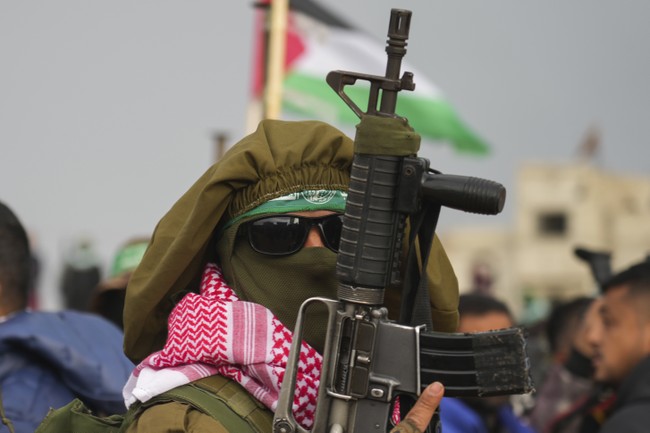
Here’s a riddle for you: What do you call a terrorist organization that can’t steal food aid anymore?
Broke.
A reasonably intelligent person — this automatically excludes most postmodern journalists and their deeply incurious assignment editors at various dinosaur legacy publications — might ask how “the terror group’s three top leaders alone are worth a staggering total of $11 billion and enjoy a life of luxury in the sanctuary of the emirate of Qatar,” as the New York Post put it a while back.
Spoiler: Ismail Haniyeh, Moussa Abu Marzuk, and Khaled Mashal did not earn those billions by launching a tech startup that got bought out by Microsoft, or anything remotely like that.
It’s not as though the two million (pre-war estimate) Gaza Arabs generate a thriving First World economy, providing Hamas with a huge tax base. Hell, Gazans can be seen digging up their own water pipes to make missiles for murdering Jews, so it’s safe to conclude that whatever entrepreneurship exists in their culture hasn’t exactly been channeled in productive directions.
No, Hamas has until very recently enjoyed a simple yet lucrative business model. They stole United Nations Relief and Works Agency (UNRWA) and World Food Program (WFP) aid meant for the people of Gaza, and then sold it at monopoly prices to the people of Gaza.
There’s no trick to it, really, not once Hamas infiltrated and effectively subsumed UNRWA.
Profits come easy when you control a literally captive population — and the necessities they need cost you nothing to steal. Say what you will about those 19th-century so-called robber barons, but Cornelius Vanderbilt had to lay railroad track, and John D. Rockefeller had to pump oil out of the ground. Hamas got to both buy and sell at gunpoint.
It’s nice work if you can get it, and Hamas leaders have been getting it for years — thanks in large part to taxpayers in Europe and the United States.
Until now.
All that changed in February, just weeks after President Trump’s second inauguration. The newly launched U.S.-Israeli Gaza Humanitarian Foundation (GHF) began doing what UNRWA was supposed to — feeding Gazans directly, with Hamas left out in the cold.
The Washington Post’s Shira Rubin and Hazem Balousha call the results the “worst financial and administrative crisis in [Hamas’s] four-decade history,” creating “stiff challenges in mustering the resources it would need to continue to fight Israel and rule Gaza.”
Wait, it gets better:
The group has also been unable to replace the well equipped tunnels and underground command centers that Israeli forces have destroyed in their bid to uproot Hamas. Before he was killed in an airstrike two months ago, Hamas military commander Mohammed Sinwar had taken refuge in a one-room hideout 30 feet below a hospital in southern Gaza. The spartan bunker was a far cry from the vast underground complex that the Israeli military said it found earlier in the war farther north, which included spacious white-tiled rooms, a blast-proof door, mechanical ventilation and ample space to accommodate weapons stockpiles.
“Hamas is not rebuilding their tunnels, they’re not paying their highly trained fighters, they’re only surviving,” IDF officer (and former high-ranking spook) Oded Ailam told the paper.
Oh, and the Gazans get the aid that Hamas had been stealing — some “genocide,” eh?
But for GHF, starving Hamas and feeding Gazans is just another day at the office.
Recommended: Drone Wars: Russia and Ukraine Race Toward a New Normal
Want more exclusive content like my Thursday Essay, Florida Man Friday, and the Five O’Clock Somewhere video live chat with Stephen Kruiser? Join PJ Media VIP — and get 60% off with promo code FIGHT.














